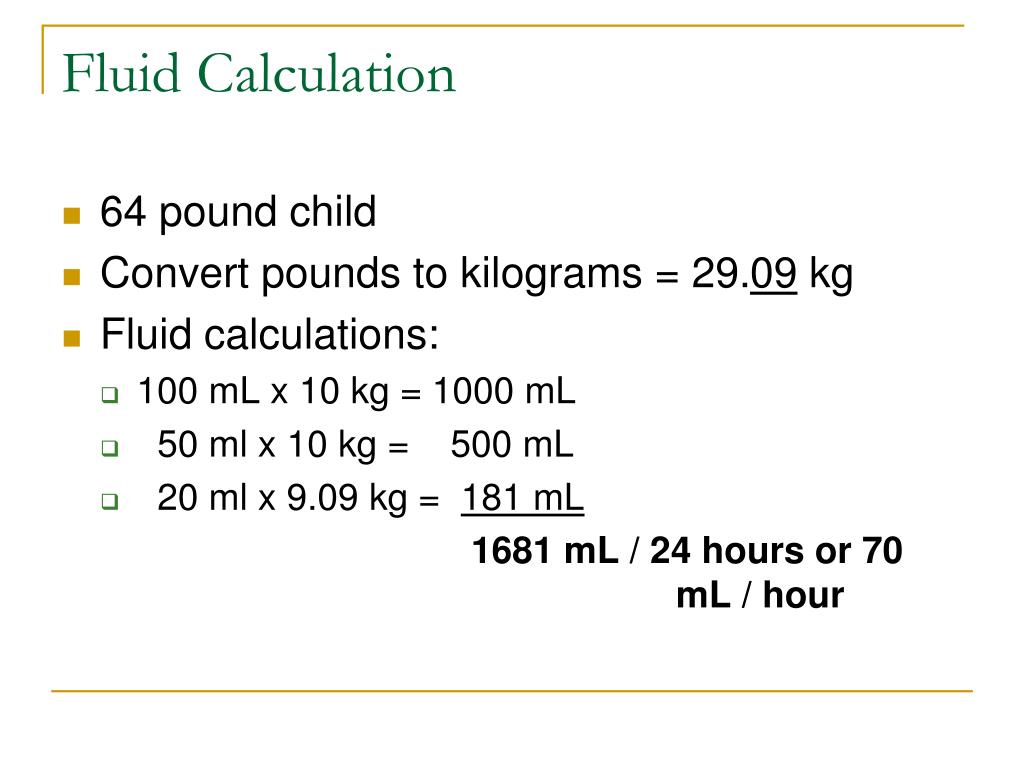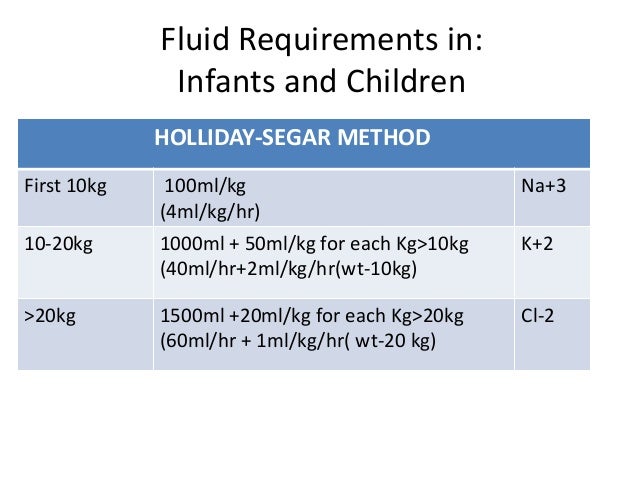

We know the patient weighs 80 kg and has a TBSA percentage of 22.5, so we will multiple 4mLs x 80 x 22.5. Since the burn is a partial thickness burn and involves more than 20% TBSA, we can use the Parkland formula to calculate the fluid requirements for the first 24 hours. Therefore, this patient with partial thickness burns to the anterior trunk and anterior right arm involves a TBSA of 22.5% (18% + 4.5%). Since this burn only involves the anterior aspect, then TBSA is 4.5%. We know the entire right arm has a BSA of 9%. There is also a partial thickness burn involving the entire anterior right arm. We know the anterior trunk has a BSA of 18%, so the partial thickness burns involving the entire anterior trunk have a TBSA of 18%. We will use the Rule of Nines to do this. Total fluids to be given over the next 16 hours = 3,600 mLįirst we have to calculate the TBSA involved by the burn. Total fluids to be given in the first 8 hours = 3,600 mL Total fluids to be given in first 24 hours = 7,200 mL TBSA = 22.5% (18% anterior trunk + 4.5% anterior right arm) Those with heart failure, kidney disease, or other comorbidities that may affect fluid resuscitation should have their volume status closely monitored. Therefore, fluids play an important role in managing circulation to decrease morbidity and mortality, especially in severe burn patients. The goal is to maintain tissue perfusion and prevent end-organ damage by replacing the intravascular fluids that are displaced. The way to manage and/or prevent burn shock from occurring is with aggressive fluid resuscitation. Hypovolemic Shock (Fluid shifts/intravascular fluid depletion)Ĭardiogenic Shock (Decreased stroke volume and cardiac output) Therefore burn shock is a combination of 3 types of shock:ĭistributive Shock (Capillary leak/vasodilation from inflammatory response) If not corrected, this can lead to persistent tissue hypoperfusion and/or end-organ damage, a phenomenon known as “burn shock”. The combination of the systemic inflammatory response, increased capillary permeability, massive fluid shifts, worsening intravascular hypovolemia, and decreased cardiac output can lead to decreased tissue perfusion.

Less intravascular volume means less venous return to the heart, which can decrease stroke volume and cardiac output. The intravascular hypovolemia (volume depletion) from fluid shifts can lead to decreased tissue perfusion.įurthermore, hypovolemia can decrease cardiac output. The Parkland formula can also be used in those who have smaller burns but cannot tolerate PO fluids, such as injuries to the mouth or inhalation injuries. Having said that, patient’s with smaller burns may still need IV fluids, and the Parkland formula still may need to be used on a case-by-case basis.Īs the TBSA approaches 15-20% involvement, an inflammatory response is usually generated and IV fluid resuscitation using the Parkland formula is more likely. The Parkland formula is typically used in burns involving > 20% TBSA for adults and > 10% TBSA in children or the elderly.īurns involving a smaller TBSA typically do not generate a systemic inflammatory response and do not cause massive fluid shifts (more on that below!)įurthermore, patient’s with smaller burns can usually tolerate fluids by mouth (PO). Superficial (1st-degree) burns are not included in the calculation.
MAINTENANCE FLUID CALCULATOR PEDS FULL
The Parkland formula is used to estimate the extent of partial thickness and full thickness burns (2nd-degree burns and higher). This means the first half of their fluids may need to be administered at a faster rate. IMPORTANT: The first 8 hours begins from the time of the burn injury, and not from the time of patient presentation, evaluation, or fluid calculation.įor example, if a patient presents to a hospital 2 hours after a burn injury, then they should receive the first half of their fluids within 6 hours instead of 8 hours. Half of the total volume should be administered in the first 8 hours, and the other half should be administered over the next 16 hours. Second 1/2 of fluids given over the next 16 hours

The equation will provide you with the estimated total amount of crystalloid fluids the patient should receive in the first 24 hours after a burn injury.įirst 1/2 of fluids given in the first 8 hours As mentioned above, the Parkland formula can be used to calculate the initial fluid requirements in burn patients.ĤmL x Body Weight (kg) x TBSA (%) = Total crystalloid fluids in first 24 hours


 0 kommentar(er)
0 kommentar(er)
